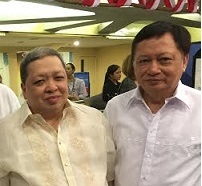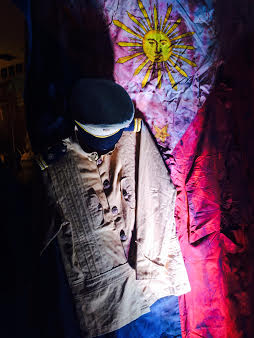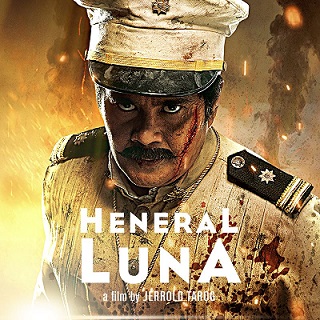
By MYLAH R. ROQUE
“HENERAL LUNA” is a movie that deconstructs the stereotype of Antonio Luna as a “barumbado” who did not win any wars and was a lesser hero than his contemporaries.
The movie showed a very human and flawed Luna played by John Arcilla: he had a violent temper and he put that to use against those he considered less than patriotic and loyal to the Malolos constitution.
“Heneral Luna” showed a general who fought battles on several levels: against Americans on the battlefront, against Filipino soldiers who abandoned the battle, against his fellow officers who refused to obey him because they felt accountable only to Aguinaldo, against members of the Aguinaldo cabinet who wanted the Philippines to remain under American rule, and ultimately against Aguinaldo, the president of the first Philippine Republic, who found him a threat to his leadership.
The movie is primarily based on the book “The Rise and Fall of Antonio Luna” by retired University of the Philippines Professor Vivencio R. Jose. He welcomes the film’s capability to reach to a wider audience, especially the youth.

“Director Jerrold Tarrog tried to capture the essence of the original Antonio Luna persona. Tarrog infused it with some transformations by omitting and/or adding some incidents and characters as required by the film and the centennial audience.”
Jose’s book is out of print but the producers published the book “The History behind the Movie.” It is a compact monograph, featuring Ria Limjap’s interview of the author and an ideal read before watching the movie.
Among the highlights of the movie is the scene when Luna slapped Felipe Buencamino (Nonie Buencamino) during a cabinet meeting at the presidential headquarters in Cabanatuan. The movie showed there was a reason for the confrontation: Luna accused Buencamino of treason for insisting that the Philippines can be autonomous even while under American rule. Luna later had Buencamino and his associate, Pedro Paterno (Leo Martinez) arrested but Aguinaldo ordered them released.
In another scene, Luna’s mother, Laureana Novicio (Bing Pimentel), slaps Luna by way of greeting, castigating him in the process for not taking better care of himself. For all his outspokenness, Antonio is the quintessential mama’s boy. He was the youngest of all seven Luna siblings and according to Jose, “the favorite of his mom, who called him Toἥing.” He took time during breaks in the battle to write letters to her and before he died, wrote a will leaving all of his possessions to her. In the following scene, she voices a flashback of seamless scenes featuring his family, his siblings especially the painter Juan Luna, his education abroad, and the friendships he had formed, especially with Jose Rizal. This is a short but effective cinematic device to give context to Luna’s character. The film itself starts in medias res, when Luna had already joined Aguinaldo’s revolutionary government and became director of war.
Another highlight is the film’s effort to stage as accurately as they could the fighting from the trenches. The trenches designed by Luna were built as tiers, so that the Filipino troops would always be able to withdraw to the next tier should the enemy be able to advance. Luna rallied his troops even as he had to deal with deserters. It is historically accurate that he once tried to kill himself rather than be captured by the enemy. The character of Capt. Eduardo Rusca (Archie Alemania) provided engaging and occasional comic relief through dialog delivered in a contemporary manner.
The scene that people would probably remember most would be the murder of Luna by soldiers from Kawit led by Capt. Pedro Janolino (Ketchup Eusebio). Soldiers took turn hacking Luna by the Cabanatuan convent. The scene is faithful to the accounts of primary sources as narrated by Jose: Luna dying with fist clenched; of the soldiers fearfully stepping back when Luna, already on the ground and dying, turned to his right; Buencamino ordering the soldiers to get all papers from his body, an old lady asking from within the convent if Luna was still moving; and of the soldiers looting the bodies of Luna and Col. Francisco ‘Paco’ Roman. One of the accounts about the killing indicated that the hacking of Luna was so violent that “even the intestines were already out after the undershirt had been taken off up to near the waist.”
Some of the creative license availed of in the movie is that the confrontation between the Filipino and American soldiers which sparked the war happened at night rather than daytime. Jose maintains it would be helpful if the scene clearly showed that an American rather than a Filipino soldier, fired the first shot.
A few other creative liberties helped in the retelling of the story. The character Isabel (Mylene Dizon), for example, is a composite of the ladies that Luna courted. Primary sources identify two women linked to Luna: Nelly Boustead who became his fiancé while abroad, and second Conchita Castillo, to whom he wrote a letter before he died. She would later marry Galicano Apacible, her cousin and Luna’s bossom friend.
The character of the journalist Joven truly existed but he did not survive one of the skirmishes. The true Joven was a writer for La Independecia who was embedded in the troops.

President Aguinaldo and Mabini were not present at the funeral of Luna and Roman. The former left for Tarlac while Mabini was already trying to evade capture by Americans.
Luna’s third companion when he went to Cabanatuan, Rusca, did not surrender to the Kawit soldiers. He lost consciousness but was later able to recount what happened in the book by Juan Villamor. General Gregorio del Pilar’s torture of Captains Jose and Manuel Bernal, brothers and Luna’s aide, is also historically accurate, according to Jose.
Jose attributes the negative portrayal of Luna in history to the same group of people who killed him and who remained influential during the American rule. Later on, this negative Luna mystique became institutionalized through history books.
To criticisms that Luna did not win any war, Jose explained that it was never the goal because Luna had already earlier recognized the difficulty of winning against the better financed American troops. Luna’s goal was to prolong the war’s conclusion by building a bastion in the north. Luna thought that the American people, whose soldiers were getting ill from diseases caught in the unfamiliar Philippine terrain, would eventually tire of spending so much money on the war.
In “The History behind the Movie,” Jose explained that Luna should be emulated for he had many qualities and “made the most of his 33 years and 4 months as a Filipino.” He was a pharmacist who studied in Madrid and specialized in bacteriology and histology at the Pasteur Institute in Paris. His poetry and essays written even at a young age survive. He was also a musician who once entertained guests in the president’s residence in Malolos by playing France Liszt on the piano. He was known among his contemporaries as a sepak tekraw player, sharpshooter and fencer. He was also a journalist, writing for La Solidaridad and La Independencia. He was fearless on the battlefield, a loving son and a good brother. “Although he failed to lead the Philippine army to victory, through no fault of his own, he won the admiration and respect of the other staunch supporters of democracy.”
